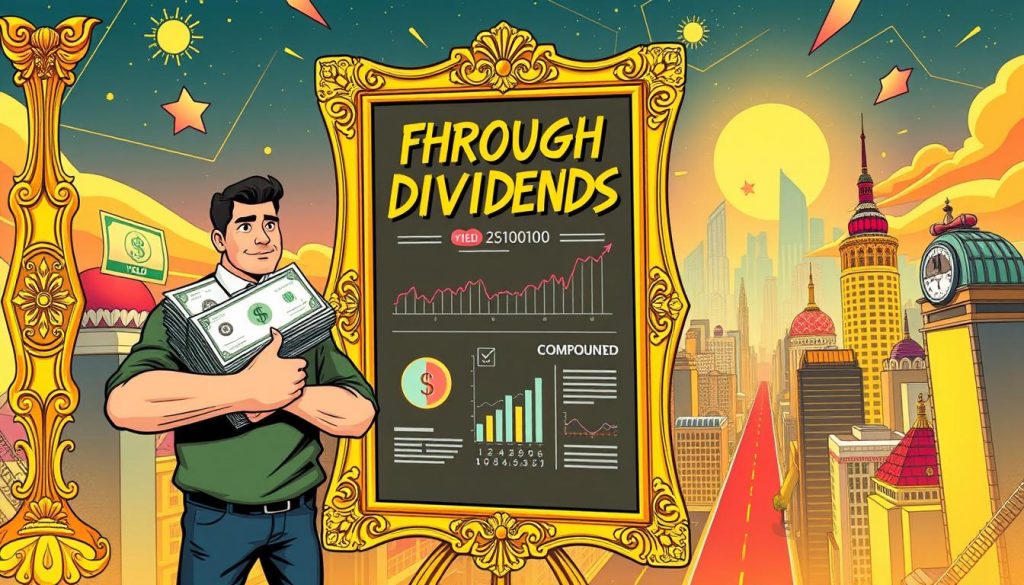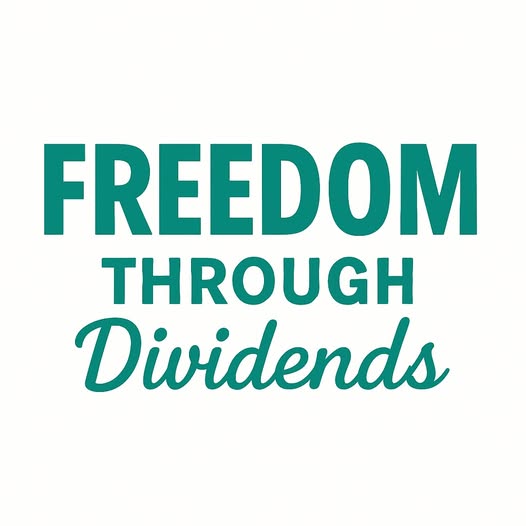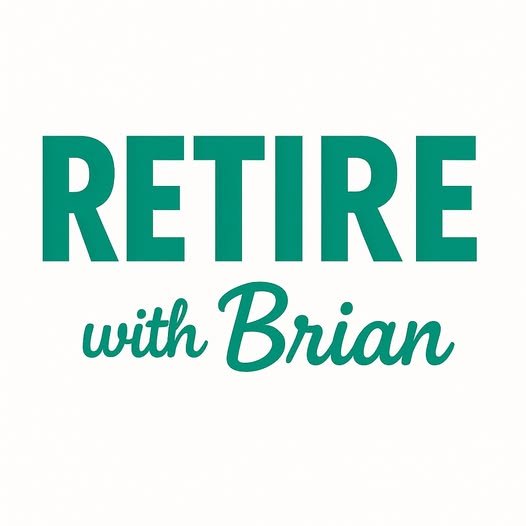Can saving just $40 a day really lead to financial independence? For many, the idea of achieving financial freedom seems daunting. But what if a consistent investment strategy could make it a reality?
Investing in dividend-paying stocks and ETFs has long been a strategy for building wealth. By leveraging the power of consistent investing and the potential for long-term growth, individuals can work towards achieving their financial goals.
The journey to financial freedom requires patience, discipline, and the right investment tools. By understanding how to effectively use dividend and ETF investing, you can take a significant step towards securing your financial future.
Key Takeaways
- Understand the basics of dividend investing and its role in achieving financial independence.
- Learn how ETFs can diversify your investment portfolio.
- Discover the importance of consistent investing in building wealth.
- Explore strategies for leveraging dividend and ETF investing for long-term financial growth.
- Gain insights into creating a personalized investment plan tailored to your financial goals.
The Power of Consistent Small Investments
Financial freedom often starts with small, regular investments. By setting aside a fixed amount each time, you can grow your wealth slowly. This approach avoids the stress of big, upfront costs.
Why $40 a Day Matters
Putting in $40 each day adds up to $1,200 a month or $14,400 a year. This steady habit helps smooth out market ups and downs. As Warren Buffett noted,
“Price is what you pay. Value is what you get.”
By focusing on value, you avoid getting caught up in short-term price changes.
The Compound Effect Over Time
The real magic of consistent investing is the compound effect. As your money grows, so do the returns on it. This creates a snowball effect. For example, investing $40 daily at a 7% annual return can lead to impressive growth over 20 or 30 years.
| Years | Total Investment | Estimated Value at 7% Return |
|---|---|---|
| 10 | $146,000 | $210,000 |
| 20 | $292,000 | $630,000 |
| 30 | $438,000 | $1,430,000 |
Setting the Foundation for Financial Independence
Small, consistent investments not only grow your wealth but also teach you financial discipline. By making investing a priority, you’re on your way to financial freedom. As your wealth increases, so does your chance to earn passive income, moving you closer to financial independence.
Understanding Your Financial Starting Point
Before you start investing, it’s key to know where you financially stand. This step is crucial for making smart choices about your money’s future.
Assessing Your Current Financial Situation
To check your financial health, start by calculating your net worth. This is what you own minus what you owe. It shows how financially stable you are.
Also, look at your income, spending, and any debts. Knowing how money moves in and out of your life is important for wise financial choices.
Establishing Clear Financial Goals
Setting clear financial goals is essential. Are you saving for retirement, a house, or your kids’ education? Your goals will shape your investment plan.
Make sure your goals are specific, measurable, achievable, relevant, and time-bound (SMART). This clarity will guide your investment choices.
Creating Your Investment Timeline
Your investment timeline is key to your strategy. A longer timeline means you can take more risks for bigger rewards.
But, a shorter timeline might need a safer approach. Knowing your timeline helps pick the right investments.
Building Your Emergency Fund First
Before investing, having an emergency fund is crucial. Aim for 3-6 months’ worth of living expenses in this fund.
This fund acts as a safety net for unexpected costs. It keeps you from having to dip into your investments too soon.
From $40 a Day to Financial Freedom: Dividend Playbook Meets ETF Strategy
Adding dividend stocks and ETFs to your portfolio can lead to financial freedom. This mix uses the steady income of dividend stocks and the wide range of ETFs. It’s a smart way to grow your wealth.
The Synergy Between Dividends and ETFs
Dividend stocks and ETFs work well together. Stocks give you a steady income and can be less volatile. ETFs spread out your investments and offer flexibility. Together, they make a strong, balanced portfolio.
Key benefits include:
- Regular income through dividend payments
- Diversification across various asset classes
- Flexibility in investment choices
Building a Balanced Portfolio
To create a balanced portfolio, choose wisely between stocks and ETFs. Think about your risk level, financial goals, and how long you can invest. A good mix might include steady dividend stocks and a variety of ETFs.
Calculating Your Path to Financial Freedom
To reach financial freedom, set clear goals and figure out how much to invest. A steady plan, like investing $40 a day, can help you get there. Always check and adjust your plan to keep moving forward.
The Power of Passive Income Streams
Passive income from dividend stocks and some ETFs can boost your financial journey. This income can cover living costs, grow your wealth, or fund new investments.
By combining dividend stocks and ETFs, you can build a strong investment plan. It supports your long-term financial dreams.
Mastering Dividend Investing Fundamentals

To achieve financial freedom through dividend investing, it’s crucial to understand the basics. Dividend investing is more than just picking stocks that pay dividends. It requires knowing what makes a quality stock, evaluating yield versus growth, and avoiding common pitfalls.
What Makes a Quality Dividend Stock
A quality dividend stock consistently pays dividends, has a strong financial base, and is stable. Companies with a long history of dividend payments are preferred. They show a commitment to returning value to shareholders.
Dividend Yield vs. Dividend Growth
Investors look at two key metrics: dividend yield and growth. Dividend yield is the annual dividend payment per share to the stock’s current price. Dividend growth is the increase in dividend payments over time. A balanced approach to both can be effective.
Dividend Aristocrats and Kings
Dividend Aristocrats have increased their dividend payouts for at least 25 years. Dividend Kings have done so for 50 or more years. These companies are the gold standard for dividend investors.
Dividend Payout Ratios and Safety
The dividend payout ratio is key for assessing a stock’s safety. It shows the percentage of earnings paid as dividends. A sustainable ratio means a company can keep its dividend payments.
Common Dividend Investing Mistakes to Avoid
- Chasing high yields without considering the underlying company’s financial health.
- Failing to diversify your dividend portfolio.
- Ignoring dividend growth in favor of current yield.
By understanding these basics and avoiding common mistakes, you can build a strong dividend investing strategy. This supports your financial goals.
ETF Investing: Your Diversification Engine
To build a strong investment strategy, knowing about ETF investing is key. ETFs mix different assets like stocks, bonds, or commodities into one investment. This makes your portfolio more diverse.
Types of ETFs for Income and Growth
There are many ETFs to choose from, depending on your goals. For income, look at bond ETFs or dividend ETFs. They aim to give you regular income. For growth, equity ETFs that track indexes or sectors might be better.
Evaluating ETF Performance and Expenses
When picking an ETF, check its performance history and expense ratio. Choose ETFs with a good track record and low fees. High fees can eat into your returns over time.
Building an ETF Core Portfolio
A diversified ETF core portfolio is a solid base for your strategy. Mix domestic and international ETFs. This spreads your investment across different markets and sectors.
Balancing Sector and Geographic Exposure
It’s important to balance your ETF portfolio across sectors and geographic regions. This helps protect your investments from downturns in specific sectors or regional economic issues.
Dividend ETFs vs. Individual Dividend Stocks
Dividend ETFs offer a mix of dividend-paying stocks, which can lower risk. While individual dividend stocks might offer higher yields, they need more research and diversification effort.
- Think about your investment goals and risk level when deciding between dividend ETFs and individual stocks.
- Consider the benefits of diversification and the chance for lower volatility with ETFs.
- Look at the fees of ETFs and how they might affect your long-term returns.
By understanding and using ETF investing, you can build a diversified portfolio. This portfolio will help you reach your financial goals and work towards financial independence.
Creating Your $40/Day Investment Plan
Now that we’ve covered the basics of dividend and ETF investing, it’s time to make a $40/day investment plan. This plan will help you grow your wealth by investing in dividend stocks and ETFs.
Setting Up Automatic Investments
To begin, set up automatic investments. This means telling your brokerage to move money into your investment accounts at set times, like weekly or monthly. Automatic investments help you invest regularly, which can reduce the effect of market ups and downs.
Dollar-Cost Averaging Strategy
A key part of your $40/day plan is dollar-cost averaging. This means investing the same amount of money at regular times, no matter the market. It helps spread out the cost of shares over time, making your investment more stable.
Allocation Between Dividends and ETFs
Choosing how to split your $40/day between dividend stocks and ETFs depends on your goals and risk comfort. A good mix might include some dividend stocks for income and ETFs for diversification and growth.
Rebalancing Schedule and Strategy
Keeping your investment mix right is key. This means checking and adjusting your investments to match your goals. A common way is to review and tweak your portfolio every quarter or year.
Brokerage Account Selection and Setup
Picking the right brokerage account is vital for your $40/day plan. Look for one with low fees, easy-to-use tools, and a wide range of investments. Make sure you know how to use your account’s features, like automatic investments and dividend plans.
| Brokerage Account Features | Description | Importance |
|---|---|---|
| Low Fees | Minimizes cost, maximizing your investment returns | High |
| User-Friendly Platform | Eases navigation and management of your investments | High |
| Range of Investment Products | Allows for diversification across different asset classes | High |
| Automatic Investment Options | Facilitates consistent investing through dollar-cost averaging | High |
| Dividend Reinvestment Plans | Automatically reinvests dividends, compounding your returns | Medium |
By following these steps and sticking to a disciplined investment plan, you can create a $40/day plan that meets your financial goals. This will help you on your path to financial freedom.
The Reinvestment Accelerator: Compounding Your Returns
To reach your financial goals, using reinvestment is key. Reinvestment boosts your journey to financial freedom by growing your returns over time.
Dividend Reinvestment Plans (DRIPs)
DRIPs are a smart way to reinvest dividends. They let you automatically buy more shares of the same stock with your dividends, without fees. This is great for long-term investors, as it helps your money grow without extra effort.
Automatic vs. Manual Reinvestment
You can choose between automatic and manual reinvestment. Automatic reinvestment, like with DRIPs, is easy and keeps your dividends working for you. Manual reinvestment lets you control when and how you reinvest, based on market changes.
Calculating the Impact of Reinvestment
It’s important to see how reinvestment boosts your returns. A simple table can show how reinvestment grows your investment over years.
| Year | Initial Investment | Dividend Yield | Reinvestment Rate | Total Value |
|---|---|---|---|---|
| 1 | $1,000 | 4% | 100% | $1,040 |
| 5 | $1,000 | 4% | 100% | $1,216.65 |
| 10 | $1,000 | 4% | 100% | $1,480.24 |
When to Transition from Reinvestment to Income
As you get closer to your financial goals, you’ll need to switch from reinvesting to using dividends for income. This choice depends on your financial plans and retirement goals. It’s wise to keep reinvesting until you’re close to retirement, then start using your investments for living expenses.
Tax-Efficient Investing Strategies

On your path to financial freedom, learning about tax-efficient investing is key. Cutting down on taxes can greatly boost your wealth over time.
Maximizing Tax-Advantaged Accounts
Using tax-advantaged accounts like 401(k), IRA, or Roth IRA can save you a lot on taxes. Contributions to these accounts lower your taxable income. For example, putting $10,000 into a traditional IRA could save you $2,000 in taxes, depending on your tax rate.
Tax-Advantaged Account Comparison
| Account Type | Tax Benefits | Withdrawal Rules |
|---|---|---|
| Traditional IRA | Tax-deductible contributions | Taxed upon withdrawal |
| Roth IRA | Tax-free growth and withdrawals | Contributions can be withdrawn tax-free and penalty-free |
| 401(k) | Tax-deductible contributions | Taxed upon withdrawal |
Understanding Dividend Taxation
Dividends are taxed differently, depending on if they’re qualified or not. Qualified dividends are taxed at a lower rate, like long-term capital gains. Knowing how your dividend investments are taxed helps you get the most after-tax returns.
“The tax code is complex, but with the right strategy, you can minimize your tax liability and maximize your wealth.”
Tax-Loss Harvesting Opportunities
Tax-loss harvesting means selling losing investments to realize losses. These losses can offset gains from other investments, reducing your taxes. This strategy works well in volatile markets.
Estate Planning Considerations
Estate planning is vital to pass on your wealth to your heirs without high taxes. Using trusts or gifting can help lower estate taxes.
By using these tax-efficient strategies, you can improve your financial freedom and reach your wealth goals.
Conclusion: Your Roadmap to Financial Freedom
Learning to turn $40 a day into financial freedom is a journey. It starts with a solid investment plan. By using dividend investing and ETF strategies, you can make a plan that fits your goals.
First, know where you stand financially. Then, set clear goals and make investing a regular habit. The dividend playbook and ETF strategy help you build a strong portfolio. They offer the chance for passive income and diversification.
Staying true to your investment plan is key. Regularly check and tweak your strategy as needed. This will help you reach your financial goals and secure a stable future.
With the tools and knowledge you now have, it’s time to act. Begin your journey to financial freedom today. Watch as your wealth grows over time.
FAQ
What is the best way to start investing in dividend stocks and ETFs?
To start, first check your finances and set goals. Then, decide on a timeline for your investments. Start by investing a set amount regularly, like a day, in a mix of dividend stocks and ETFs.
How do I choose between dividend stocks and ETFs for my portfolio?
Choosing depends on your goals, how much risk you can take, and your diversification plan. Stocks offer regular income, while ETFs diversify and can be safer. A good mix of both is often best.
What are the benefits of using a Dividend Reinvestment Plan (DRIP)?
A DRIP lets you automatically buy more shares with dividends. This can grow your portfolio faster over time. It’s a great way to build wealth long-term.
How do I evaluate the performance of my ETF investments?
Look at the ETF’s tracking error, expense ratio, and returns. Compare it to its benchmark. Regularly check if it meets your goals and adjust as needed.
What is tax-loss harvesting, and how can it benefit my investment strategy?
Tax-loss harvesting means selling losing stocks to offset gains. This reduces your taxes. It’s especially useful in changing markets to keep more of your returns.
How often should I rebalance my investment portfolio?
Rebalance when your mix of investments strays from your target. This can be every six months or annually, depending on your strategy and market.
What are the key considerations when selecting a brokerage account for my investments?
Look at fees, investment choices, customer service, and ease of use. Pick a brokerage that fits your goals and needs for a smoother investment journey.
How can I achieve financial independence through dividend investing and ETFs?
For financial independence, invest consistently and diversify well. Understand your goals and use compounding and passive income. This can help you build wealth for your future.

